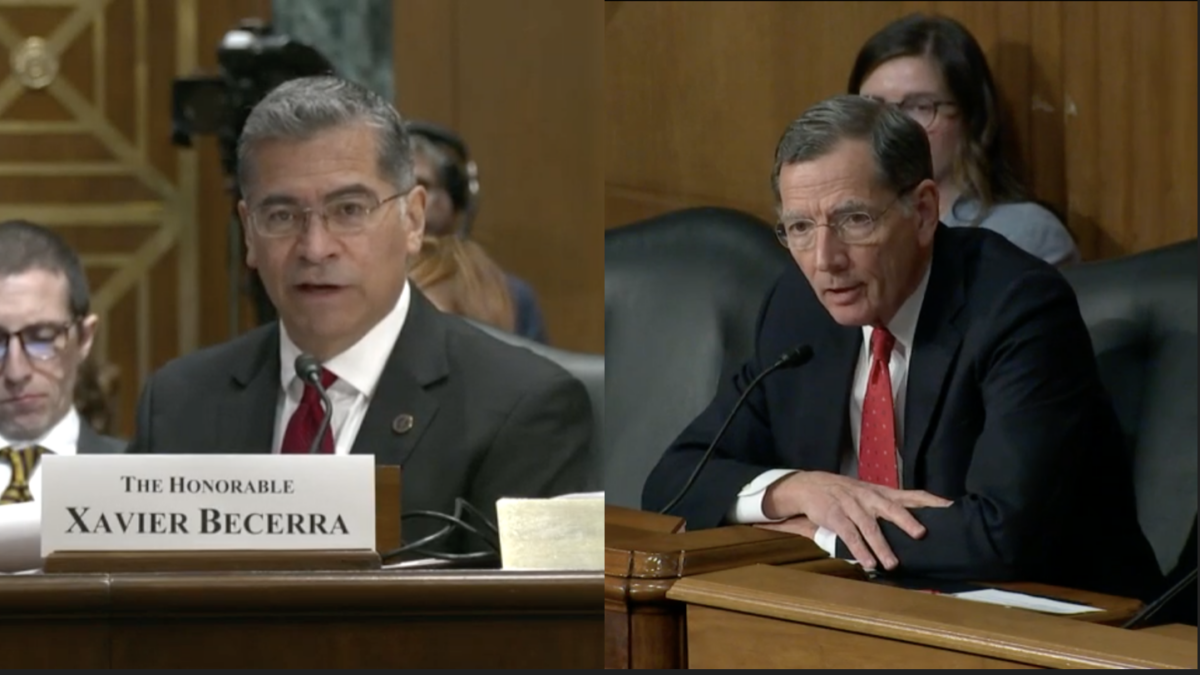
In just five months, it seems Vice President Kamala Harris has managed to crack the code on illegal immigration. All we have to do to ensure that Central Americans stop illegally crossing our border is to transform the Northern Triangle countries of Honduras, Guatemala, and El Salvador into stable, prosperous democracies. That’s it! That’s the answer!
Harris’s office on Thursday released what it calls a “Root Causes Strategy” that lays out, in just 18 pages, what decades of policymakers and successive administrations have apparently missed: the reason so many Central Americans come to the United States illegally, it turns out, is because their countries are plagued by poverty, crime, corruption, and violence. Solve those problems and bang! — you solve illegal immigration.
But seriously, the vice president’s “root causes” document amounts to a heap of bureaucratic nonsense from an administration that has never taken illegal immigration seriously and whose own policies have turned the border crisis into a maelstrom of chaos.
It’s hard to overstate the Biden administration’s fundamental unseriousness about all this, whether it be root causes of migration or the border itself. Every step of the way, Harris has shown a mixture of dismissiveness and incuriosity in her role as Biden’s “border czar.” After a quick jaunt to Mexico and Guatemala last month, and an even more superficial stopover in El Paso (which lasted a few hours and didn’t include a visit to the physical border), Harris has now released what amounts to a list of warmed-over platitudes about creating opportunity and fighting corruption in Central America.
The “five pillars” Harris puts forward as the administration’s core strategy are exactly the kind of inept, unfocused, and often meaningless efforts that have come to nothing over the past two decades in the region: addressing poverty, fighting corruption, promoting human rights, fighting crime, and combating violence. There’s nothing wrong with these as overarching goals, but one must be realistic about the enormity of the task at hand, and cognizant of what’s been tried before — and failed. If this strategy document is any indication, no one in the Biden administration is being the least bit realistic here.
For example, how will the United States accomplish these lofty goals? Take it away, team Harris: “Effecting systemic change and achieving the desired end state of a democratic, prosperous, and safe region will require the governments of El Salvador, Guatemala, and Honduras to govern in a transparent, professional and inclusive manner that favors the public interest over narrow private interests.”
That’s great, but does Harris know that the president of Honduras, Juan Orlando Hernández, is almost certainly a drug-trafficker, whose brother was sentenced to life in prison back in March by a U.S. judge? Is Harris aware that President Alejandro Giammattei of Guatemala, whom she met in June, is right now facing mass civil unrest and demands for his resignation over the firing of a special prosecutor who was investigating corruption cases linked to Giammattei?
But please, let’s hear more about how we’ll never solve illegal immigration unless we can get Honduras and Guatemala to govern “in a transparent, professional and inclusive manner.”
That of course is the whole point of this charade. If you begin with the assumption that the only way to stop illegal immigration is to transform Central America into a model of good governance and economic prosperity, then you’ll never stop illegal immigration. And it appears this is exactly the approach the Biden administration is taking.
The Harris strategy, if you can even call it that, is described as “a core component of our Administration’s efforts to establish a fair, orderly, and humane immigration system.” But there’s no mention of other core components that must be a part of such a strategy in order to succeed.
Those are things like asylum reform, border security, and the robust enforcement of immigration laws, including enforcement of deportation orders in the nation’s interior by Immigrations and Customs Enforcement, which under Biden has slowed almost to a standstill. Getting Honduras to clean up its act is surely a worthy goal, but we’re on pace for a record number of apprehensions on the southwest border this year, and short-term policy changes, which Biden could make overnight, would have a real and immediate effect on the ground.
Instead, this pipe dream of nation-building in Central America, along with the entire mantra of addressing “root causes,” has been the only thing the administration has been willing to say about illegal immigration and the ongoing fiasco at the border. All the other “root causes” of the current crisis, like Biden’s decision to end a raft of Trump-era border policies as soon as he took office, go unacknowledged. No matter how bad the border gets, none of those early — and, as it turns out, disastrous — decisions by Biden will ever be reconsidered.
To put it bluntly, the “root causes” approach is designed to fail, because it ties the transformation of Central America’s Northern Triangle — a nearly impossible task — to meaningful reform of the U.S. immigration system. It’s like saying yes, of course we need to change our strategic policy toward China, but we have to establish a missile base on Mars first.
That’s not to say that we’re not long overdue for rethinking our long-term policy of strategic neglect toward Central America. Indeed, we can’t solve our illegal immigration problem without changing our approach vis-à-vis Mexico and Central America.
One major shift, for example, is to begin thinking of illegal immigration not primarily as a domestic political issue but as a national security and a foreign policy issue, and to stop thinking of the governments of the sending countries as partners with whom we can collaborate but as bad actors who need some serious arm-twisting to do the right thing. Seen in that light, Harris’s strategy document would have been more serious and realistic if it had been 18 pages outlining a plan to invade and indefinitely occupy the Northern Triangle with a view to annexing the whole region into the United States.
As it is, the administration’s strategy amounts to nothing more than bromides and half-measures that have been tried before and accomplished nothing except to line the pockets of nongovernmental organizations that land USAID contracts to provide goods and services that Central Americans don’t need — like digital banking apps for Guatemalan farmers, which Harris actually touted back in May.
But even if by some miracle Harris could cackle and wave a wand over Central America, magically whisking away the cartels and gangs and corrupt politicians that run these countries, we would still be facing a crisis on our border, which at this point has become a magnet for migrants from all over the world. Of the more than 1 million apprehensions at the southwest border so far this fiscal year, nearly half (450,000) are Mexican nationals, and a not-insignificant share (some 183,000) are from countries other than Mexico, Guatemala, Honduras, and El Salvador. They are coming from as far away as Bangladesh and Uzbekistan, and their numbers are growing.
Why are they coming? No doubt, many of these folks hail from places that, like Central America, suffer from poverty, violence, and corruption. But they are coming now because they know that if they can get across the Rio Grande, the Biden administration will let them stay.
That’s the plain truth, and no amount of hand-waving about “root causes” and grand strategy and nation-building in the Northern Triangle will change that.









